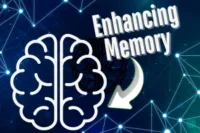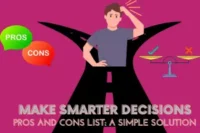The Ultimate 2025 Guide: How to Build Your Professional Network on LinkedIn
Published: 05/08/2025
In today’s world, LinkedIn isn’t just an online resume—it’s a powerful platform that can elevate your career, boost your business, and help you achieve your professional goals. Gone are the days when LinkedIn was merely a static portfolio of your qualifications. In 2025, it has transformed into a dynamic space where relationships and influence are the true currency.
The Old Way of Thinking vs. The New Results-Driven Perspective
For years, the common misconception was that LinkedIn was simply a place where you upload your resume and wait for job offers to roll in. But that old-school mindset doesn’t hold true anymore. Building a powerful LinkedIn network isn’t just about waiting for opportunities—it’s about creating them. In the digital age, it’s about how you leverage connections to grow your career, boost your business, and establish your reputation as a thought leader.
Whether you’re just starting out in your career, running a startup, or already leading a successful business, LinkedIn can be your ticket to success. However, knowing how to use LinkedIn as a true professional networking tool is where many people get stuck. The platform offers much more than job searching—it offers a chance to build a living, breathing network that works for you around the clock.
The Challenges at Different Stages of Your Career
No matter where you are in your career journey, building a network on LinkedIn comes with its own set of challenges.
- For the Newbie or Job Seeker: It often feels like you’re starting from scratch. You have little to no professional history on the platform and may struggle with how to present yourself effectively. Without strong connections, it can feel like you’re shouting into the void, hoping someone notices your profile.
- For the Entrepreneur: LinkedIn is more than just a place for connections; it’s a lead-generation machine. But generating leads on LinkedIn isn’t as simple as just adding people. It takes strategy, content creation, and relationship-building to truly harness the platform for business growth.
- For the Leader or Established Professional: As a leader or seasoned professional, the challenge shifts. It’s no longer about finding your first job or generating leads—it’s about leveraging your network to maintain influence, drive change, and unlock high-level opportunities. Your network can become a powerful tool to mentor others, collaborate on large projects, and even influence industry trends.
| The Solution: A Roadmap for Everyone, From Newcomer to CEO |
|---|
This guide is designed to be your one-stop resource for building a LinkedIn network that works for you—whether you’re a student just starting, a young professional seeking growth, an entrepreneur looking for leads, or an experienced leader aiming for influence. Through foundational steps, advanced strategies, and expert insights, we’ll walk you through how to build, grow, and leverage your LinkedIn network to fuel your career or business success in 2025 and beyond. |
By the end of this guide, you’ll have a clear understanding of how to optimize your profile, build meaningful connections, and strategically position yourself as a thought leader in your field. No more wasted time or missed opportunities—just actionable strategies that deliver real results.
The Foundational Steps (For the Beginner & Job Seeker)
Building a strong LinkedIn network begins with the basics—optimizing your profile, establishing credibility, and making meaningful connections. If you’re new to LinkedIn or currently on the job hunt, this section will equip you with the non-negotiables for setting up a standout profile and making the most out of your first connections.
Step 1: Optimize Your Profile to Attract Recruiters
A well-crafted LinkedIn profile is more than just an online resume—it’s your professional digital identity. To make a lasting first impression, your profile should immediately capture attention and showcase your strengths. Here’s how to optimize it for recruiters:
Create a Professional Headshot & Keyword-Rich Headline
Your profile picture is your first opportunity to make a great impression. Choose a professional, high-quality photo where you appear approachable and confident. This simple step goes a long way in enhancing your credibility.
Your headline is your next key area. Instead of the default job title or a generic statement like “Looking for a job,” use this prime real estate to highlight your skills and career aspirations. Make sure it’s keyword-rich—using terms that recruiters are likely searching for.
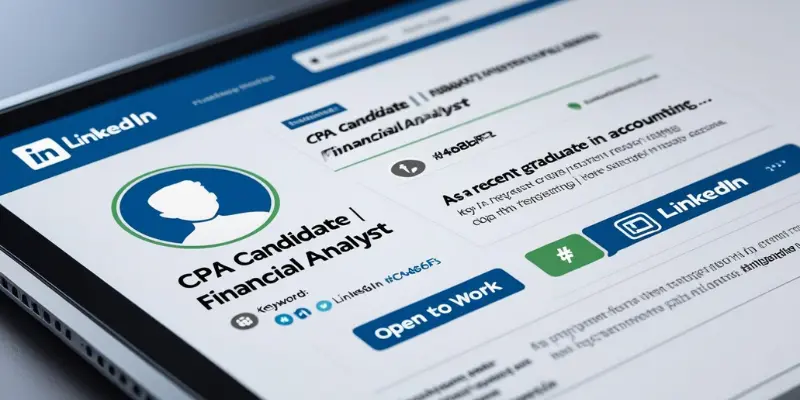
Example:
- Weak: “Just Graduated, Seeking a Job.”
- Strong: “CPA Candidate | Financial Analyst | Experienced in Financial Modelling & Accounting”
By incorporating specific keywords like “CPA” or “Financial Analyst,” you’re making your profile easily discoverable by recruiters searching for professionals with your skill set.
Write an Engaging “About” Section
Your “About” section is your elevator pitch. Use it to tell your story—who you are, what drives you, and what you bring to the table. Instead of just listing your qualifications, focus on your passion, skills, and career aspirations. This is your chance to differentiate yourself from other job seekers.
Example:
- “As a recent graduate in accounting, I am passionate about using data to drive financial decisions. My coursework in financial analysis and internships with top-tier firms have given me hands-on experience with budgeting, auditing, and strategic financial planning. Currently seeking opportunities to apply my expertise and grow in the financial sector.”
The more specific and personalized you are, the more likely you’ll connect with recruiters and professionals in your field.
Use the “Open to Work” Feature Strategically
The “Open to Work” feature is a game-changer for job seekers. By turning it on, recruiters know that you’re actively looking for opportunities. However, there’s a strategic way to use this feature:
- Actionable Tip: Make sure to customize the jobs you’re interested in under the “Open to Work” feature, so only relevant recruiters can see it. This helps narrow your job search and ensures you’re targeted for the right opportunities.
Here’s a simple checklist for creating a recruiter-friendly profile:
- Professional headshot
- Keyword-rich headline
- Engaging “About” section
- “Open to Work” settings activated with relevant job preferences
Step 2: Build a Credible Foundation with Certifications & Projects
When you’re just starting out, building credibility on LinkedIn is crucial. The good news is, you don’t need years of experience to do this. Certifications, academic achievements, and personal projects can significantly strengthen your profile.
Showcase Academic Achievements & Certifications
In a competitive job market, certifications and academic achievements are the perfect way to prove your qualifications. List all certifications that are relevant to your field, such as CPA, MBA, or Google Analytics Certification. Recruiters actively search for professionals with these specific designations, which can give you a significant advantage.
- Insight from Deloitte: Many recruiters focus on specific certifications and qualifications because they demonstrate a certain level of expertise and commitment to continued professional development.
Highlight Projects & Early Work Experiences in the “Featured” Section
Your “Featured” section is a great space to showcase your accomplishments—whether it’s a class project, an internship, or an entrepreneurial venture. This section allows you to feature presentations, articles, or any work that highlights your skills and experience.
Example: If you worked on a sustainability project as part of your coursework, share it. Even if it’s a personal project, such as a blog or research paper, featuring this content can help establish you as a credible professional in your field.
- Insight from Forbes: Young entrepreneurs can benefit from using the “Featured” section to bridge their credibility gap. By showcasing projects and accomplishments, they present themselves as proactive professionals rather than novices.
Here’s an example of how your profile might look after showcasing relevant certifications and projects:
- Featured: Sustainability Project on Renewable Energy (Link to presentation)
- Certifications: Google Analytics Certified | Financial Modelling Certification
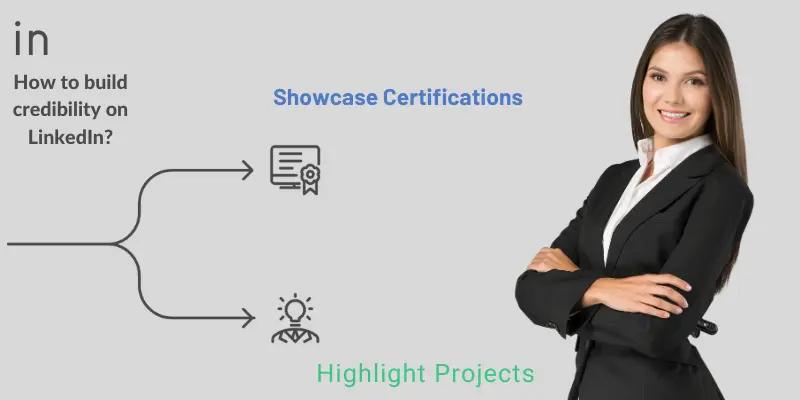
Step 3: Master the Art of the Connection Request
One of the most crucial steps to building your LinkedIn network is sending thoughtful connection requests. A generic “I’d like to connect” message won’t cut it in today’s professional landscape. You need to personalize each request to stand out and show genuine interest.
Craft Personalized Messages
A personalized message shows that you’ve taken the time to understand the person you’re reaching out to and that you have a specific reason for connecting. Always reference something specific—whether it’s a post they made, a shared connection, or a topic you both care about.
Example:
“Hi [Name], I saw your post on [topic] and really appreciated your insights on [specific point]. As a student in [field], I would love to connect and learn more from your experiences. Looking forward to connecting!”
This approach increases the likelihood of your connection request being accepted.
Understand the “Strength of Weak Ties”
Don’t just limit your connections to close friends or people you already know. The “strength of weak ties” concept, proposed by sociologist Mark Granovetter, suggests that connections outside of your immediate circle are often more valuable for career growth because they offer new perspectives, opportunities, and networks. Don’t hesitate to connect with people who share mutual interests or who might offer fresh insights.
Here’s a personalized message example that has a high acceptance rate:
- “Hi [Name], I recently came across your post on [topic], and I found your perspective on [point] really insightful. I’m currently studying [field] and would love to connect to exchange ideas and learn from your experiences.”
Building a credible LinkedIn profile is just the first step. By optimizing your profile with a professional headshot, keyword-rich headline, and compelling “About” section, you set yourself up for success. Adding certifications and showcasing projects in your “Featured” section further strengthens your profile, while crafting personalized connection requests will help you start building valuable relationships from day one. Now, you’re ready to move on to the next level of network building!
Strategic Growth (For the Entrepreneur & Young Professional)
Now that you’ve set the foundation with a solid LinkedIn profile, it’s time to build a network that not only connects but also generates business and influence. For entrepreneurs and young professionals, LinkedIn is more than a passive tool—it’s an active platform where strategic engagement can propel your career or business to new heights. Let’s dive into the steps you can take to leverage LinkedIn for growth.
The Power of Thoughtful Engagement
You’ve likely seen many people mindlessly “Like” posts as they scroll through LinkedIn—but engagement goes far beyond that. To truly build a strong network, you need to shift from passive consumption to active participation. Here’s how to do it:
Move Beyond a Simple “Like” to Leaving Insightful, Thought-Provoking Comments
The real magic of LinkedIn comes when you engage with content thoughtfully. A simple like is easy, but leaving a meaningful comment can create a lasting impression. When commenting, aim to add value rather than just agreeing with the post. Share your unique perspective, ask a question, or offer constructive feedback.
- Actionable Tip: Make it a habit to comment on posts that align with your interests or industry. Share a story or example that connects to the topic at hand.
Example:
- Post: “Top 5 mistakes young entrepreneurs make when launching a startup.”
- Comment: “I’ve experienced this first-hand. My biggest lesson was understanding the importance of market research. Early on, we skipped it, and it cost us time and resources. Here’s how we turned it around…”
Engaging like this not only establishes your expertise but also signals to your network that you’re invested in the community.
Join and Actively Participate in Industry-Specific LinkedIn Groups
LinkedIn groups are a goldmine for expanding your network and collaborating with peers in your field. Joining groups related to your industry allows you to learn from others, share your insights, and build relationships with like-minded professionals. The trick is to not just be a passive member—active participation is key.
Example: “Young Professionals Network” or “Entrepreneurship & Innovation Hub” are excellent groups where young professionals can exchange ideas and gain valuable insights from seasoned entrepreneurs. When you actively participate in discussions, share relevant content, or offer advice, you increase your visibility and start positioning yourself as a go-to expert.
A young entrepreneur named Sarah, who joined the “Young Professionals Network” group, consistently shared her startup experiences and insights. After months of engaging with posts, she landed a client for her design services through a simple conversation in the group. This success story is proof that consistent engagement and offering value can lead to tangible business opportunities.
The New Rules of Content Creation in 2025
Content creation on LinkedIn is no longer about posting text-heavy updates. Visual content, videos, and multimedia posts are now the cornerstone of engagement on the platform. Here’s how to take your content creation strategy to the next level.
Provide Actionable Content Ideas
The key to standing out is authentic, valuable content. As an entrepreneur or young professional, share your journey, lessons learned, and industry insights. This positions you as a thought leader and attracts individuals who resonate with your experiences.
- Actionable Content Ideas:
- “Lessons from My First Startup: What I Wish I Knew”
- “5 Industry Insights I Learned This Week While Growing My Business”
- “How I Landed My First Client—What Worked and What Didn’t”
Each post should offer tangible takeaways or insights that your audience can apply in their own careers. This is what makes your content truly valuable.
Use the Best Formats for Engagement
In 2025, the best-performing content types are short-form videos and multi-image carousels. Why? These formats are visually engaging, easily consumable, and more likely to capture the attention of your audience.
- Video Content: Short, dynamic videos (1-2 minutes) tend to have higher engagement rates compared to text posts. These videos could be simple insights, tutorials, or personal reflections that offer value to your network.
- Carousel Posts: A multi-image carousel allows you to break down complex ideas or showcase step-by-step guides. It’s a great way to share a process, like how to optimize your business’s social media presence or how to network effectively.
- Actionable Tip: Aim for a balance of video, images, and written content. For example, create a short video sharing a recent business experience, then follow up with a carousel summarizing the key takeaways.
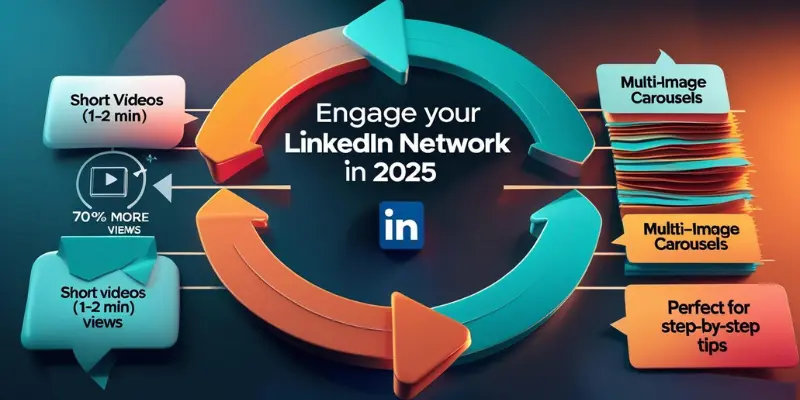
Master the Use of Hashtags
Hashtags are your way to amplify your reach on LinkedIn. By strategically using relevant hashtags, your content can reach individuals outside your immediate network and help you get discovered by people interested in the topics you’re discussing.
Hashtag Tips:
- Use a mix of trending hashtags (e.g., #PersonalBranding, #Entrepreneurship, #YoungProfessional) and niche-specific hashtags (e.g., #TechStartups, #MarketingInnovation).
- Best Practices: Limit your hashtags to 3-5 per post. Too many can appear spammy, while too few can limit your visibility.
- Actionable Tip: Always research the performance of hashtags before using them. LinkedIn provides suggestions, but tools like Hashtagify or RiteTag can help you find the most relevant and trending hashtags for your content.
Video Content Engagement Stats—Did you know that LinkedIn video posts receive 5x more engagement than static posts? With more professionals seeking quick insights, video content is a must-have in 2025.
By moving beyond basic engagement and into thoughtful, value-driven interactions, you’ll start to establish a meaningful presence on LinkedIn. Strategic content creation, especially with visual media, will help you increase your visibility and influence within your industry. Whether you’re sharing your journey as a young professional or offering insights as an entrepreneur, consistent and strategic engagement is the key to growing your LinkedIn network in 2025.
Part 3: Advanced Leverage (For the Leader & Experienced Professional)
As a seasoned professional or leader, your LinkedIn network is more than just a collection of connections—it’s a strategic asset that can unlock new business opportunities, partnerships, and influence. Now that you’ve built a solid foundation, it’s time to leverage your network to drive high-value opportunities and establish yourself as a thought leader. This section will teach you how to make the most of your existing connections to elevate your business and leadership profile.
Optimizing Your Network for High-Value Opportunities
With a well-established LinkedIn network, it’s time to focus on quality over quantity. For leaders and experienced professionals, LinkedIn is a tool for business development and influence, but only if you use it strategically.
Use LinkedIn’s Search Filters to Find Specific Professionals for Partnerships or Mentorships
LinkedIn’s advanced search filters are a powerful tool to find and connect with the right people—whether you’re seeking business partners, mentors, or industry experts. The key here is to be specific. Here’s how:
- Actionable Tip: Use LinkedIn’s search filters to narrow down professionals by industry, location, current company, job title, or even shared interests. For example, if you’re seeking a mentor in the fintech industry, you can search for experienced leaders in that field who have a proven track record.
- Go to the search bar, select “People,” then click on All Filters to apply criteria like “Location,” “Industry,” “Past Companies,” and “Connections.”
- Example: If you’re looking for a potential business partner in digital marketing, use keywords like “digital marketing strategist” and filter by industry or company to find the best candidates.
The Strategic Value of Warm Introductions
In business and leadership, warm introductions are far more effective than cold outreach. A warm introduction happens when someone in your network introduces you to a new contact, typically because they know and trust both parties. This approach greatly increases the chances of building a meaningful relationship.
- Actionable Tip: When asking for a warm introduction, be specific about why you’re reaching out to the person and how it can benefit both sides. Be respectful of the introducer’s time and make the process as smooth as possible.
- Example: “Hi [Name], I’ve been following [Contact’s Name] for some time, and I admire their work in [specific area]. I would love an introduction to discuss potential synergies between our companies. If you’re comfortable with it, could you kindly make the connection?”
- Why It Works: Introductions from mutual connections help build trust more quickly. Studies have shown that warm introductions have a 75% success rate in getting meetings or partnerships, compared to only 30% for cold outreach.
Did you know that 70% of professionals report that their most valuable opportunities come from referrals or introductions within their network? This statistic underscores the importance of leveraging your existing connections to open new doors.
Transitioning Online Connections to Real-World Opportunities
The true value of LinkedIn lies in its ability to transition digital connections into real-world interactions. Whether it’s in-person meetings, virtual coffee chats, or collaborations on projects, moving beyond LinkedIn messages to actual conversations is where high-value opportunities happen.
- Actionable Tip: After establishing rapport online, don’t hesitate to take the next step by scheduling a meeting, either in person or virtually. This could be as simple as inviting them for a Zoom call or LinkedIn Live session to exchange insights or explore collaboration opportunities.
- Example: If you’ve built a good relationship with a fellow business owner online, propose a virtual strategy session to discuss mutual business challenges or potential synergies. It could be the start of a fruitful partnership.
Leaders who effectively transition their LinkedIn relationships into real-world opportunities report 30% more success in their business ventures than those who only maintain digital connections.
Using LinkedIn for Thought Leadership & Business Growth
As an experienced professional or leader, your LinkedIn presence should reflect your expertise and influence. Moving beyond networking to thought leadership will not only elevate your personal brand but also contribute to your business growth.
Posting Valuable Articles, Newsletters, or Long-Form Content
In 2025, content is king. By sharing thoughtful, original content—whether it’s articles, newsletters, or long-form posts—you position yourself as a trusted industry authority.
- Actionable Tip: Dedicate time each month to writing long-form posts or articles that share insights, trends, or best practices in your field. These can range from personal stories and lessons learned to industry analysis and predictions for the future.
- Example: An experienced entrepreneur might write about “The Future of E-commerce in 2025” or “What I Learned from Scaling My Startup,” offering both practical advice and visionary insights that will engage your audience.
- Pro Tip: Use LinkedIn Pulse, the platform’s native publishing tool, to write and share longer pieces of content. This feature allows your articles to reach a wider audience, especially among your followers and connections.
Employee Advocacy: Empowering Your Team to Build Your Company’s Brand
Thought leadership doesn’t have to be a solo effort. Employee advocacy is a powerful way to amplify your company’s brand by empowering your team to share their expertise and experiences on LinkedIn.
- Actionable Tip: Encourage your employees to share company achievements, thought leadership pieces, and industry insights. This boosts your company’s credibility and visibility while showing that your team is knowledgeable and engaged.
- Example: A CEO could create a company-wide LinkedIn campaign encouraging employees to write and share articles on the company’s mission, values, or innovative work. This increases both employee engagement and the company’s visibility.
- Insight from HR: According to an HR Director at [Company Name], “Authentic leadership and employee engagement on LinkedIn are key drivers of long-term business success. It’s not just about the company’s content—it’s about empowering your team to be advocates for your brand.”
Pro Tip: Companies with high levels of employee advocacy see a 20% increase in sales, 30% more reach, and 25% more inbound job applications.
As a leader or experienced professional, LinkedIn isn’t just a networking tool—it’s a launchpad for business development and influence. By strategically leveraging your network, making warm introductions, and positioning yourself as a thought leader, you can unlock powerful opportunities for both yourself and your business. Remember, success on LinkedIn isn’t about collecting connections—it’s about building meaningful relationships that drive real-world results.
Expert Section: Common Mistakes & Expert Tips for 2025
To truly harness the power of LinkedIn, it’s important to avoid some of the common pitfalls that can hold you back. Whether you’re just starting out or you’re a seasoned professional, understanding these mistakes—and how to avoid them—will help you leverage LinkedIn to its full potential. Additionally, we’ll cover expert-level tips that will elevate your profile and ensure you’re making the most of the platform.
Top Mistakes that Will Stall Your Growth
As much as LinkedIn can propel your career forward, it can also hinder your progress if you’re making certain missteps. Here are the top mistakes that will stall your growth on LinkedIn:
Mistake 1: Neglecting Your Profile’s SEO
Many LinkedIn users overlook the importance of optimizing their profiles for search engines. Just like with any content on the web, search engine optimization (SEO) plays a key role in making your profile discoverable by recruiters, potential business partners, and other key professionals.
- Actionable Tip: Use relevant keywords throughout your profile—especially in the headline, “About” section, and job descriptions. This improves your profile’s visibility in search results. For example, if you’re a content strategist, your headline could include terms like “Content Marketing Expert | SEO | Digital Strategy.”
- Why It Matters: LinkedIn’s search algorithm works similarly to Google’s—if your profile isn’t optimized with the right keywords, it won’t appear in relevant searches.
Mistake 2: Sending Generic Connection Requests
We’ve all received the generic LinkedIn connection request that says, “I’d like to add you to my network.” While it’s easy to hit “connect,” generic requests can feel impersonal and don’t set you apart from the hundreds of other requests people receive daily.
- Actionable Tip: Always personalize your connection requests. Reference a shared interest, mutual connection, or something specific from their profile that resonated with you. A personalized approach increases your connection acceptance rate significantly.
- Example: “Hi [Name], I saw your post about the growth of e-commerce in 2025. As someone working in digital marketing, I’d love to connect and hear your thoughts on the future of the industry.”
Mistake 3: Being a Passive Lurker Instead of an Active Participant
LinkedIn isn’t just a place to passively observe; it’s a platform designed for active participation. Being a “lurker” who only scrolls through posts without engaging is a missed opportunity for building relationships and increasing your visibility.
- Actionable Tip: Make it a habit to engage with others’ posts—comment thoughtfully, share relevant content, and participate in discussions. The more you engage, the more visible you become to your network.
- Why It Matters: Active participation leads to increased visibility and helps establish you as an engaged and valuable member of your industry. Being seen as an expert starts with interacting with others’ content, sharing your own insights, and showing up consistently.
Pro-Level Tips for the Modern Professional
Once you’ve avoided these common mistakes, it’s time to level up your LinkedIn game with pro-level tips that will help you stand out in 2025.
Tip 1: Audit Your Network Annually to Ensure You Are Connecting with the Right People
Just like you would regularly audit your business’s performance, you should audit your LinkedIn network to ensure that you’re connected with the right people. Over time, your network should evolve to reflect your current professional goals.
- Actionable Tip: Once a year, take time to go through your connections and evaluate whether they align with your current career or business objectives. Unfollow or remove connections that no longer serve your goals and actively reach out to new people who can bring fresh opportunities.
- Why It Matters: A curated network is more valuable than a large, uncurated one. By focusing on quality connections, you can build a network that actively contributes to your growth.
Tip 2: Use the “Skills & Endorsements” Section to Showcase Your Top Abilities
The Skills & Endorsements section of your LinkedIn profile can play a huge role in showcasing your expertise. However, it’s important to actively manage this section rather than leaving it as a passive list of random skills.
- Actionable Tip: Prioritize your top skills based on your career focus and industry. Actively ask colleagues, peers, and mentors to endorse you for these skills. The more endorsements you have, the more credible you appear in your field.
- Why It Matters: Recruiters and potential business partners often look at this section to gauge your expertise. Endorsements validate your abilities, giving you a competitive edge.
Tip 3: Highlight Multilingual Proficiencies, as They Are a Key Differentiator for Global Companies
In today’s increasingly globalized job market, multilingualism is a highly valued skill. If you speak more than one language, make sure to showcase this in your LinkedIn profile.
- Actionable Tip: Add languages to the “Languages” section of your profile, and list your proficiency level (e.g., beginner, conversational, fluent, native). If you speak a language fluently, consider adding it to your headline to make your profile even more appealing to global companies.
- Why It Matters: Companies that operate internationally or work with diverse markets often prioritize professionals with multilingual skills. French and Spanish, for example, are key differentiators for professionals working in Europe or Latin America.
Insight from Deloitte: According to a recent study by Deloitte, employees with multilingual proficiencies are 30% more likely to be hired by global companies. This is especially true for languages like Spanish, which is highly valuable in the U.S. and Latin America, and French, which opens doors in European and African markets.
By avoiding these common mistakes and implementing these pro-level tips, you’ll be well on your way to building a LinkedIn presence that not only attracts attention but drives real-world opportunities. Whether it’s curating your network, actively participating in conversations, or highlighting your top skills and multilingual abilities, the strategies we’ve covered will ensure that your LinkedIn profile stands out in 2025 and beyond.
Conclusion: Your Next Steps to Build a Powerful Network
Building a powerful LinkedIn network is not an overnight endeavor. It’s about consistency, strategic actions, and the right mindset. We’ve covered everything from optimizing your profile and making your first connections to strategic engagement, content creation, and leveraging your network for high-level opportunities. Whether you’re just starting out or already a seasoned professional, LinkedIn is a tool that, when used correctly, can open doors to endless possibilities.
Key Takeaways:
- Foundational Optimization: Start by optimizing your profile, including a professional headshot, a compelling headline, and an engaging “About” section. This will immediately boost your credibility and increase visibility to recruiters and professionals in your field.
- Strategic Growth: Once your profile is ready, move beyond the basics. Engage thoughtfully, participate in industry-specific groups, and create valuable content. Your content should be authentic and valuable, helping you establish authority and attract new opportunities.
- Advanced Leverage: For leaders and experienced professionals, it’s time to leverage your existing network for high-value opportunities. Use search filters, make warm introductions, and transition online relationships to real-world opportunities.
- Avoid Common Mistakes: Don’t neglect your profile’s SEO, avoid sending generic connection requests, and be an active participant in your LinkedIn network. These simple actions will keep your growth on track.
- Pro-Level Tips: Audit your network regularly, showcase your top skills, and highlight multilingual abilities to stand out in a global job market.
It’s time to take action! Update your LinkedIn headline right now to better reflect your skills and career aspirations, or take it one step further by sending your first personalized connection request. Whether you’re reaching out to a potential mentor or simply expanding your network, these actions will help you start building a network that works for you.
Remember, your network is your net worth—so start taking steps today to build a professional network that will propel you toward success in 2025 and beyond.
Still Have Questions? Get Your Answers Here
Start by “optimizing your profile” with a professional headshot, an attention-grabbing headline, and a clear, engaging “About” section. Then, connect with classmates, colleagues, and industry professionals to build your initial network. Follow companies and influencers to stay updated on industry trends.
Your headline should be “keyword-rich” and “specific”. Instead of generic titles, focus on showcasing your skills and aspirations. For example, “Data Analyst | Python Expert | Passionate About Big Data” is more attractive than “Looking for a Job.”
To make meaningful connections, always “personalize your connection requests”. Mention a specific reason why you want to connect, whether it’s shared interests, a recent post they wrote, or mutual connections.
For consistent engagement, aim to post at least “2-3 times per week”. This could include sharing industry insights, commenting on relevant posts, or posting thought leadership content. “Consistency” is key to staying visible on LinkedIn.
Join “industry-specific groups” and actively participate in discussions. Share your expertise, ask questions, and offer valuable insights. This will help you build relationships with like-minded professionals and expand your network.
Instead of just liking posts, leave “thoughtful comments” that add value to the discussion. Sharing your perspective, asking questions, or offering resources shows your active engagement and positions you as a knowledgeable professional.
Use the “Skills & Endorsements” section to list your top skills and ask colleagues or mentors to endorse them. Focus on demonstrating your expertise through “authentic content” and contributions, rather than just boasting about your abilities.
If you’re actively exploring opportunities, it’s beneficial to use the “Open to Work” feature to let recruiters know you’re open to new roles. Be selective about which roles you indicate interest in to avoid unnecessary outreach.
If you’re not currently looking for a new job, it’s still worth connecting with recruiters. You can “accept the connection” and politely let them know that you’re not currently seeking new opportunities but would be open to hearing about future ones.
Once you’ve established rapport online, “invite your connections for a virtual coffee” or an in-person meeting to discuss shared interests or potential collaborations. Moving beyond digital communication helps turn connections into lasting relationships.

- Be Respectful
- Stay Relevant
- Stay Positive
- True Feedback
- Encourage Discussion
- Avoid Spamming
- No Fake News
- Don't Copy-Paste
- No Personal Attacks



- Be Respectful
- Stay Relevant
- Stay Positive
- True Feedback
- Encourage Discussion
- Avoid Spamming
- No Fake News
- Don't Copy-Paste
- No Personal Attacks



